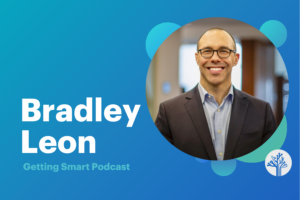Integrating Classroom Practice and Experimentation into Professional Learning

By Julie Keane, Director of Research and Evaluation, VIF International Education
If school districts want teachers to change instruction, the implementation stage must be included and supported more explicitly in professional development offerings, as this is the critical stage where teachers begin to commit to an instructional approach. — Teaching the Teachers
Integrating classroom practice into the professional learning cycle is essential if teachers, schools and districts want to implement effective professional development (PD) strategies, as outlined in 8 New Ingredients for Innovative Professional Development.
This theory of action (see image below) ensures that every PD experience (on and offline) places classroom practice at the center of the process, in order to have the maximum impact on student learning.
 Embedding classroom practice into the theory of action builds on two evidence-based approaches—lesson study and action research—that rely on educators to:
Embedding classroom practice into the theory of action builds on two evidence-based approaches—lesson study and action research—that rely on educators to:
- Drive their own learning based on both their own and their students’ needs.
- Embed PD and professional peer feedback into their everyday classroom practice.
- Investigate their classroom practice as an integral part of professional learning.
Lesson study, a core Japanese practice that has been adapted and adopted throughout the U.S., is:
“A process that deepens the interaction of a school’s professional learning community by developing the habits of self-reflection and critical thinking through very personal collaboration with their colleagues and structured observation of their students.”
In any collaborative PD design, incorporating feedback and observations from colleagues is an effective form of professional learning that relies on experimentation, observation and reflection of classroom practice. Alongside the practice of lesson study is action research, a core component of the VIF professional development curriculum. Too often, teachers drop action research once in the classroom because of the perceived—and sometimes real—time-consuming nature of many projects.
However, we have broken down the process into manageable parts to guide educators. Online modules offer a great way to integrate the reflection process, allowing educators to attach evidence of classroom practice and student work, and pushing them to demonstrate evidence of professional learning in practice. By attaching student evidence, teachers can reflect and share what succeeded and what areas still need support.
Reflection leads teachers to think about what could have been done differently, what was successful and what could be improved upon for the future. This PD approach brings the design process into classroom practice, ensuring a cycle of learning, experimentation, reflection and revision.
As part of our ongoing research collaboration with the Friday Institute for Educational Innovation at North Carolina State University, we have found that this approach is effective for both teachers and students.
Notably, the majority of participating teachers “agree” or “strongly agree” that they:
- Are more open to experimenting and taking risks with new instructional content, strategies and technologies (73%).
- Are more excited about the content they teach (65%).
- Have engaged in valuable collaboration with other educators (64%).
One teacher noted, “My students have become more interested in learning and are highly motivated. At the end of the day, students are what matter the most in my teaching practice, and if they get more committed to the learning process through this, the experience is more valuable.”
When classroom practice is part of the PD learning cycle, teachers are provided more time and space to try out new ideas. The design ensures that the implementation of new strategies and content reaches the most important audience—the students.
This post is part of the “Impact of Teacher Learning” blog series produced in partnership with VIF International Education (@vifglobaled). Join the conversation on Twitter using #classroomstories. For more, check out the interactive website at impact.viflearn.com, and see:
- Empowered Educators Leads to Engaged, Higher Achieving Students
- A “Fail Forward” Approach: Building Cultures of Innovation in Schools
- Theory of Action: Positive Impact on Teaching and Learning
Julie Keane is Director of Research and Evaluation at VIF International Education. Follow her on Twitter: @juliekeane
Stay in-the-know with all things EdTech and innovations in learning by signing up to receive the weekly Smart Update. This post includes mentions of a Getting Smart partner. For a full list of partners, affiliate organizations and all other disclosures, please see our Partner page.






0 Comments
Leave a Comment
Your email address will not be published. All fields are required.